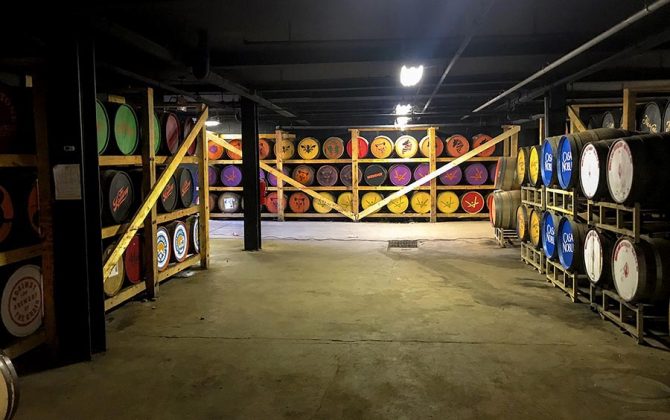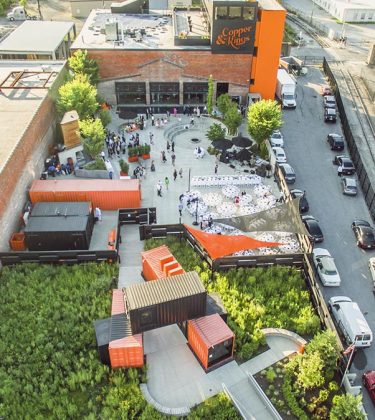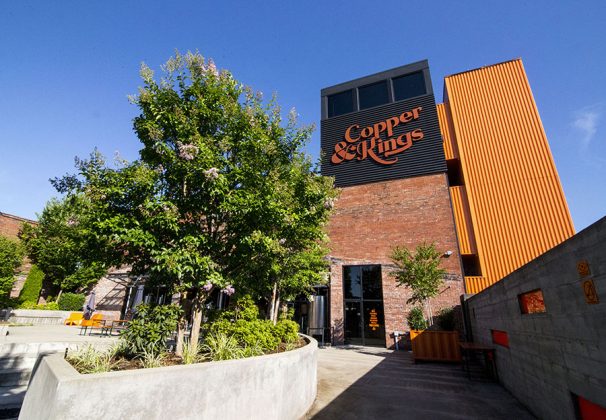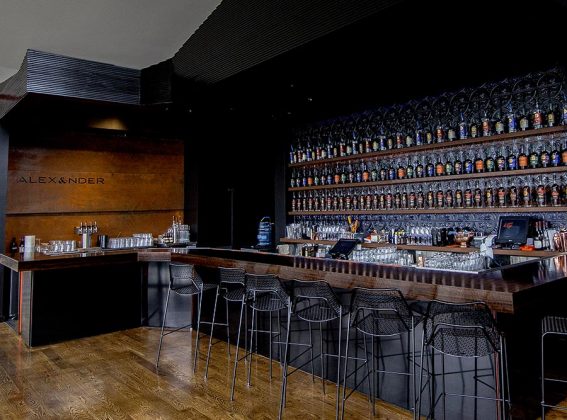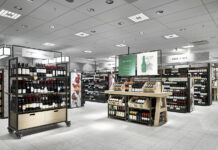Many distilleries plan to source until their own spirits mature. But how do you make the transition when they actually are ready?
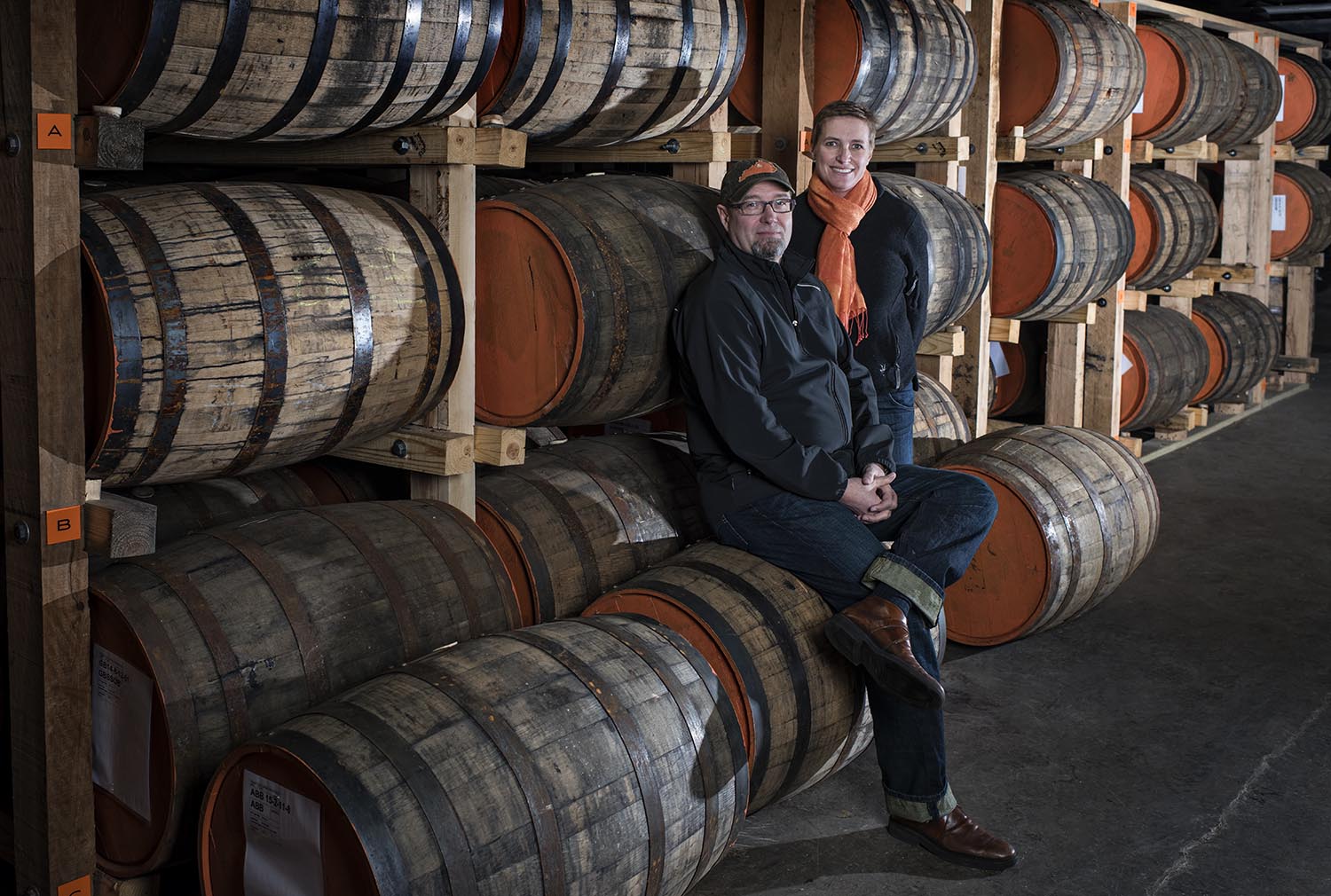
Louisville, Kentucky-based Copper & Kings Distillery has played a truly critical role in the emergence of American brandy as a serious, high-quality spirit. Like many other distilleries across the country, Copper & Kings started out by purchasing spirits from other distilleries while their own spirits matured. Over the years, the distillery has steadily increased the portion of its own spirits used in its products, and recently has shifted nearly entirely into using its own distillate. It’s a transition many distilleries plan to make, despite the difficulties.
ADI recently sat down with Copper & Kings founder Joe Heron to discuss the opportunities and perils of sourcing, how the distillery made the transition from sourced stock to its own distillate, and what the future holds for American brandy.
ADI: How did you get started sourcing brandy, especially when nobody was really selling anything in bulk publicly?
Heron: There’s this super exciting moment when your big, bright, shiny copper stills get delivered to your distillery. It’s probably one of the most exciting moments in a distillery’s life cycle. It means you’re real and it gives you the optimism of an entrepreneur. But that optimism can be very tempered very quickly by the realization that you’re actually going to have to bring a product to market that has enough volume for there to be a practical business model. When we first started, we very quickly realized that unaged brandy was not going to cover enough of our costs.
So we started investigating where we could source aged brandy. You couldn’t easily go to MGP and buy a bazillion proof gallons of whiskey. There wasn’t that much available. We actually started out by looking through the ADI Directory, finding the brandy distillers, and calling them up. If they made it in pot stills and were willing to sell some, we asked for samples. That’s how we really got into the American brandy business. We would source whatever aged brandy we could, both grape brandy and apple brandy, from anybody that made it on a pot still. Then we’d put it in bourbon barrels and store it at the distillery.
ADI: And you always planned to transition to your own distillate eventually.
Heron: Yes. The minimum age profile that we use in our products is four years, so we knew we’d be waiting at least four years for our own stuff. Like all barrel-aged maturation, you’re trying to project volume years in advance. How much you’re going to sell, how much you’re going to source and produce. Then you have to do the Rubik’s Cube of how long it needs to be in barrel and what kind of barrel. It’s a four- sided cube that you’re trying to get into alignment.
ADI: Did you buy everything all at once in the first year?
Heron: Not at all. The first year it was pretty easy to buy brandy. We bought brandy from distilleries in six or seven states–California, Oregon, Washington, Ohio, Michigan, New York, maybe one other. After that, we would periodically buy more as we found it, sometimes from the same places, sometimes from new ones. In year one and two it was easy. Year three got difficult. In the fourth year, it was very hard to find any aged brandy at all, anywhere. And by then, it was no good for us buying two-year-old brandy. We already had a lot of that on our own and it didn’t make sense to buy more.
After a certain stage, you’re really looking for sourced brandy that will enhance and improve your profile, that can add depth if you need it. That’s hard to find. We could still find good brandy if we wanted, but we think that the brandy that we have now has plenty of depth and character and personality. Compared to our early releases, they’re markedly more voluptuous and full. That’s because of our grape varietals. We have a very specific blend of grapes: Muscat, Colombard and Chenin Blanc.
ADI: And now you don’t really buy any aged brandy.
Heron: Not anymore. Why would we? We’re five and a half years old. It’s pretty much all our own, other than some very small limited release barrels that we’ve picked up for different finishes or things like that.
ADI: When you were buying brandy from several different states and starting to make your own as well, did you try to create flavor consistency, or did you not care that much if each batch was a little different?
Heron: I’ll be honest, we were mainly concerned with getting enough to be viable, so a lot if it was very different. What we could get in Oregon was very different to what we got in California or New York. Still, as a brandy producer, you have to know your grape varietals and what they do. We were fortunate that a lot of brandy in California is Colombard or Muscat, which we wanted to do anyway. Those are both classic brandy grape varietals. We’re pretty singular in our use of Chenin Blanc, which is a very South African brandy grape [Heron is South African]. And we also saw a lot of Thompson, one of the original American brandy grapes.
ADI: How did you approach the changeover to using primarily your own distillate?
Heron: We always just did it slowly, which let us manage consistency. It happened over time. We didn’t decide to stop using our sourced brandy one day… we layered our own four-year distillate in as an increasing percentage over time, the young into the old, so you’re creating a consistent thread that goes through over time. You slowly increase the percentage of your own product while keeping a consistent profile so there are no dramatic changes in flavor. You want it to be so gradual that you hardly notice it.
ADI: How do you feel about your own distillate at this point, now that it’s fully aged in the Kentucky environment?
Heron: I am in love with it. Every pot still has a very specific fingerprint, so between that and our grape blend, the brandy is very uniquely ours. And we use bourbon barrels for aging, which makes a big difference. If you taste Copper and Kings, it’s very fruit-forward. It has a rambunctiousness that’s more similar to bourbon or whiskey, but with an unctuous voluptuousness that I think is one of the essential qualities of good brandy.
ADI: From an economic perspective, how has the decision to source played out over time?
Heron: If we hadn’t made the decision to source brandy in the beginning, we wouldn’t be anywhere like we are right now. People don’t drink eau de vie, or even know what it means. You just can’t make enough money from your unaged spirits. Yes, you can make unaged brandy, gin, absinthe, and other things that can turn quickly. But to be in the aged brandy business, we had to source.
ADI: How does it work economically over time as you make the transition?
Heron: When we first started, brandy was quite cheap, even quite old brandy. But we were buying that and laying our own brandy down in barrels for four years at the same time. That’s another cost. There are so many that add up until you don’t even want to think about it. It takes a lot of money.
ADI: You came into this market really early when there was not much demand for American brandy. How did you estimate how much you would need to source and produce?
Heron: There wasn’t even a thing called American brandy when we started. It was just cheap and sweet California brandy, and Cognac. A $20 bottle of American brandy didn’t exist. How do you project demand based on that?
ADI:What is the future now that you’re primarily using your own distillate?
Heron: From here on out, it’s about helping American brandy stand up and stand tall. In terms of sourcing, we don’t need to do that. We’re more interested in what’s the next wave of varietal type expression in brandy. What is that going to be? We also get a lot of drive out of partnerships and collaborations. My job is to make people happy with what they buy in the bottle.
ADI: How do you feel about these new American brandy brands, like Bertoux and E&J Gallo’s Argonaut and their revamp of Germain-Robin?
Heron: I think it’s all great for the category. At one stage it was basically just me and Dan Farber from Osocalis trying to push this thing up the hill. Getting American drinkers much more comfortable with superior American brandy, that’s fabulous. The more brandy in this market, the better. As for us, we play in several price points. We have two flagships, our American craft brandy and American apple brandy, and two ultra-premium releases, Butchertown [grape] brandy and Floodwall apple brandy.
And I’ll be honest, if someone inquired about sourcing brandy with us, we would entertain that conversation. We wouldn’t go out and say, “No, you can’t have any brandy because you’re competition.” We believe in building the category.
ADI: Right. The category is still not all that big, although it looks like it’s on its way over the next few years.
Heron: I think it’s sitting really, really close to the edge of mainstream. I think we’ve done a good job of that, and not just in bars. You have to build your business at retail as well. On-premise turns the lights on, off-premise keeps the lights on.
ADI: Any final thoughts on sourcing?
Heron: Sourced brandy is part of what we stand for. We aren’t ashamed of our sourced releases. We blended them. We aged them. We nursed them into being. It’s like adopting a child or rescuing a dog. It may not have been yours originally, but you have the same intensity of love for it.


